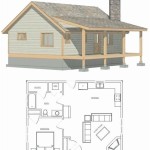Sewer Plans for Your Home: Essential Considerations
Owning a home in New South Wales comes with various responsibilities, including managing the property's sewer system. A well-designed and properly maintained sewer plan is crucial for ensuring the health and safety of your family and the environment. Here's a comprehensive guide to understanding the essential aspects of sewer plans for your home in NSW.
1. Understanding Sewerage Systems
There are primarily two types of sewerage systems in NSW: reticulated and on-site. Reticulated systems connect to a central sewer network, while on-site systems manage wastewater on your property.
2. Legal Requirements for Sewer Plans
In NSW, it's a legal requirement to obtain approval from the relevant council before constructing or altering a sewer system. This involves submitting detailed sewer plans that adhere to the Building Code of Australia (BCA) and local regulations.
3. Elements of a Sewer Plan
A comprehensive sewer plan should include the following elements:
- Site plan showing the location of the proposed sewer system
- Details of the proposed sewer pipes, including material, size, and layout
- Specifications for the sewage treatment system (if on-site)
- Provisions for ventilation and odour control
4. Selecting a Qualified Designer
Engaging a qualified and experienced sewer designer is essential for creating an efficient and compliant sewer plan. They should be familiar with BCA regulations and local council requirements.
5. Approval Process
Once you have a sewer plan, you must submit it to the relevant council for approval. This involves paying an application fee and providing any additional documentation required by the council.
6. Construction and Inspection
Once your sewer plan is approved, you can proceed with the construction of your sewer system. The council may conduct inspections during and after construction to ensure compliance.
7. Ongoing Maintenance
Regular maintenance is crucial to keep your sewer system functioning properly. This includes inspecting the system for damage, cleaning sewer pipes, and pumping out septic tanks (for on-site systems).
Conclusion
Sewer plans for your home in NSW play a vital role in maintaining health, safety, and environmental well-being. By understanding the legal requirements, elements of a sewer plan, and the approval process, you can ensure your property has a compliant and effective sewer system. Remember, engaging a qualified sewer designer and adhering to all regulations is essential for a successful sewer plan.

How To Obtain Before You Dig Plans

Sewerage Backyard Pods

Sewers Get Educated Granny Flats

Sewerage Service Diagrams Ssd Professional Fast
Sewer Service Diagram Requirements Questions And Answers

Sewer Diagram Infotrackgo

Where Can I Find Drainage Plans For My House Soho Real Estate
Sewer Service Diagram Requirements Questions And Answers

Sewerage Service Diagrams Ssd Professional Fast

Connections








